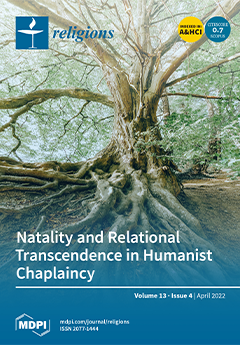Cheng Xuanying’s
Expository Commentary to the Daode jing presents the
Laozi as the origin of Daoism—a Daoism which, by his time in the seventh century, included many beliefs and concepts coopted from Buddhism. The commentary is representative of
chongxuan xue (Twofold Mystery philosophy),
[...] Read more.
Cheng Xuanying’s
Expository Commentary to the Daode jing presents the
Laozi as the origin of Daoism—a Daoism which, by his time in the seventh century, included many beliefs and concepts coopted from Buddhism. The commentary is representative of
chongxuan xue (Twofold Mystery philosophy), which is characterized by the integration of Buddhist concepts and methods into the interpretation of the
Laozi. Taking the integration of the Buddhist concept of the bodhisattva as universal savior of limitless compassion, this paper investigates the “why” and “how” of this cooption. The question of why Cheng Xuanying wanted to read the
Daode jing as a testimony to Laozi and Dao being a compassionate, universal savior is addressed with a contextualization of the commentary in its time and location: early Tang Chang’an. Next, the paper discusses, in detail, the hermeneutic tools Cheng Xuanying used to achieve his reading. Cheng Xuanying integrated his commentary and the original text of the
Laozi in a complex structure, combining the
kepan technique, interlinear interpretation, and added structuring comments, in addition to what might be termed “strategic citations”. This paper analyzes how he worked with these means to construct arguments and specific readings of the
Laozi.
Full article





